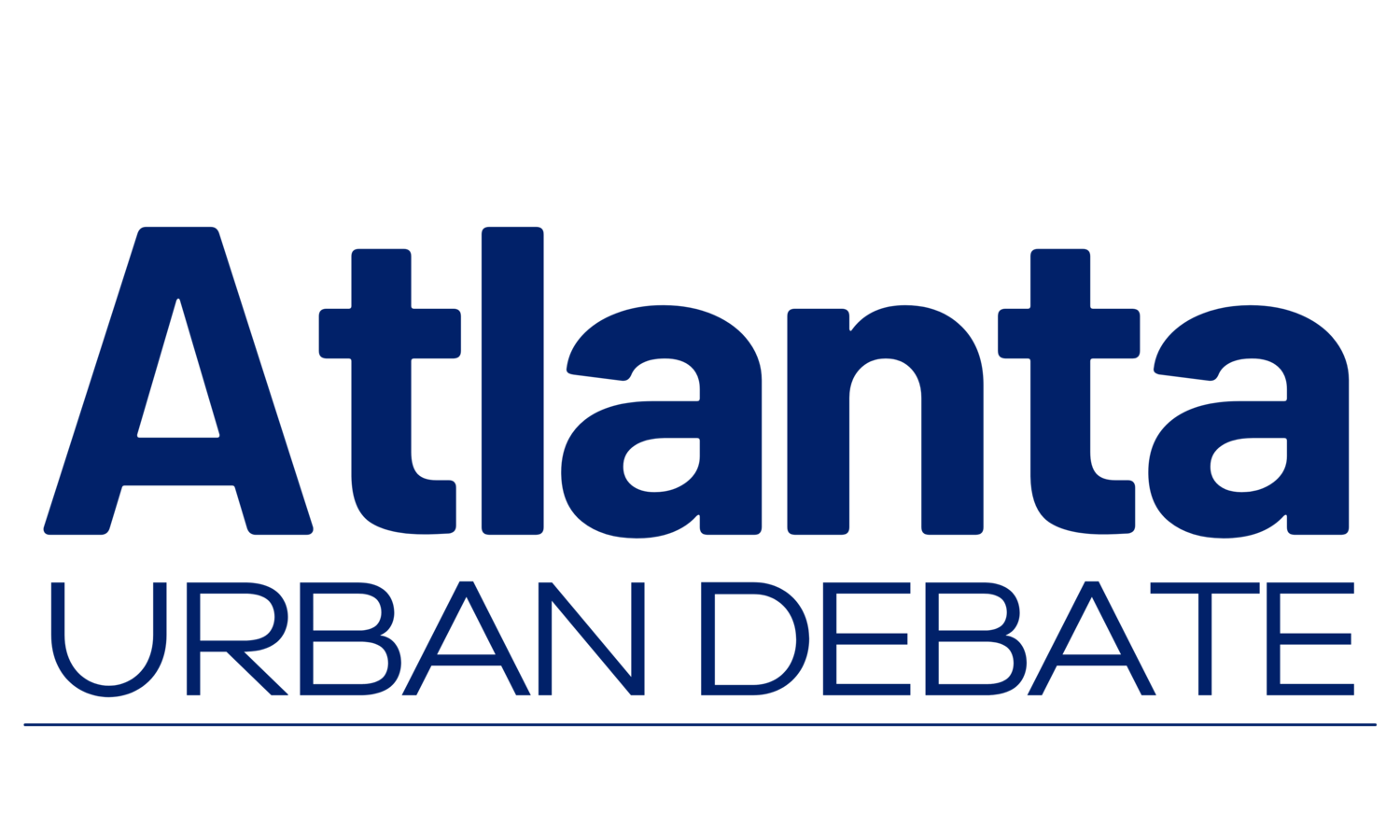The Atlanta Urban Debate League is committed to providing excellent debate education programs, services, and opportunities to diverse students, educators, and members of the community!
Using Evidence
Why use evidence
1. Supporting your claim.
2. Creating credibility of your claims – this is to leverage your evidence or prove how great your evidence is.
3. Proving the recency (relevancy) of your claims.
Structure breakdown
Author. The author is the person(s) or organization who wrote the article/journal/story/study/etc. Include the first and last name of your author, or the organization name.
Author qualifications. Your author’s credentials are crucial to establishing credibility to your evidence (ETHOS). For example, “John Doe, Professor of Literature at Emory University” is much more credible than simply just, “John Doe”. Credentials are key to weighing the credibility of your evidence.
Credentials typically can include: any degree (PhD/MD = Doctor) OR position (Professor, Scientist, Journalist, Director of the Center for Civic Engagement at Emory…).
Example: Christy Bradley, Director of the Atlanta Urban Debate League, …
Date. The month and year of the publishment. Giving the direct date of your evidence establishes that your evidence is recent and thus relevant.
If you are citing a source from the current year, only month is necessary.
If you wish to stress how recent an event or article is, you can cite the specific day.
Example: On March 16, a series of mass shootings at several massage parlors in Atlanta thrusted anti-Asian hate crimes to the world’s attention.
The actual content. There are two main ways to incorporate content: directly quoting and paraphrasing.
Directly quoting – copying and pasting of someone else’s words. Many times, this leads to the sentence flowing poorly. You are ONLY allowed to make minor changes that do not change the meaning or context of your author. Any changes made, including capitalization and punctuation, must be placed in brackets.
Paraphrasing – taking the main idea or facts stated by an author and rephrasing them in your own words. BE CAREFUL to not deviate from the ideas that they present. It is a MAJOR evidence violation to incorrectly cite evidence from poor paraphrasing.
Examples
According to a Reuters fact check on February 19, “coal, gas and nuclear [energy], lost nearly twice as much power than renewable energy sources, which contributed to just 13% of the power outages”.
Reuters is a reputable fact checker known by many people. February 19 is given to emphasize that the event was very recent. The year is implied to be the current year, which is 2021.
The actual evidence is a direct quotation, with the word [energy] input to allow the audience to know what the subject of the sentence is. This is allowed as energy is directly stated to be the subject in the previous sentence.
James Conca, environmental scientist and contributor to Forbes, in November 2017, writes that the health effects of environmental pollution are the leading cause of death worldwide each year.
James Conca is an individual author. The credentials are given that he is an environmental scientist (a position requiring a degree) and a contributor to Forbes (a position). The month and year are given for the date.
The actual evidence is paraphrased, as in put into your own words. Note that the reason why paraphrasing was utilized in this scenario is for the advantage of having a smooth flowing sentence.
Other considerations
Referring to previous sources: include at least the last name and some contextual clue (such as, “from the previous article”)
References: at the end of a typed speech, you’ll want to have a bibliography of your sources. This is for any submission (which most major speech competitions and professors will require) to verify the accuracy of your evidence incorporation.
VIOLATIONS: evidence violations are one of the most serious violations, with even the slightest deviation from the correct response capable of subjecting your speech/entry to disqualification.
